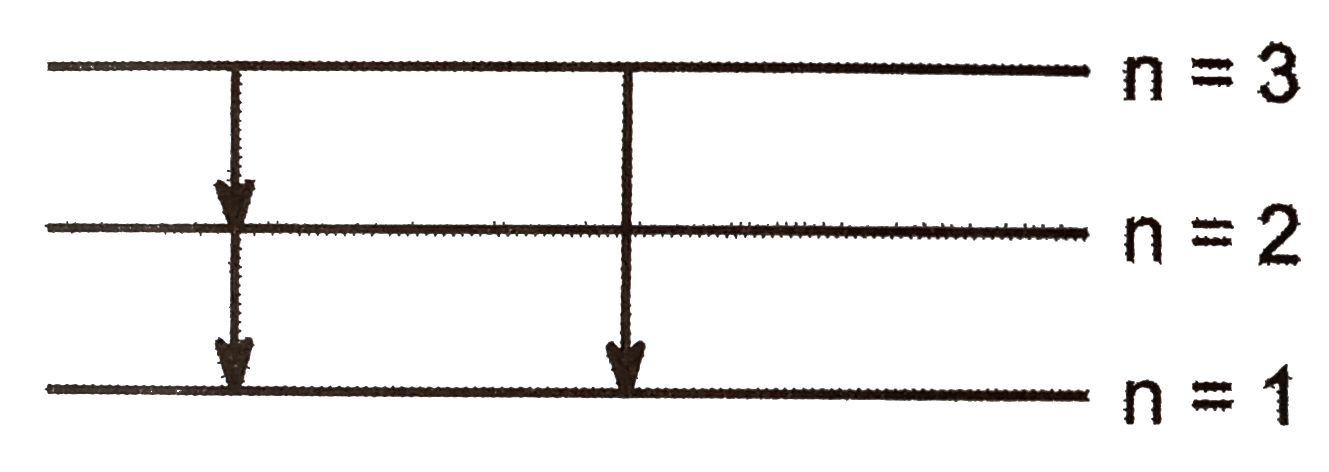Consider the follwoing two elerctronic transition possibilites in a hydrogen atom as pictured below :

(1) The electron drops from third Bohr's orbit to second Bohr's obit followed with the next transition from second to first Bohr's orbit .
(2) The electron drops from third Bohr's orbit to first Bohr's orbit directly .
Show that :
(a) The sum of the enrgies for the transitions n=3 to n=2 and n=2 to n=1 is equal to the energy of transiton for n=3 to n=1 .
(b) Are wavelengths and frequencies of the emitted spectrum also additive in the same way as their energies are ?
Video Solution
Text Solution
Applying, ΔE=RH[1n21−1n22]
For n=3 to n=2,
ΔE3→2=RH[122−132]=RH×536 . . .(i)
For n=2 to n=1,
ΔE2→1=RH[112−122]=RH×34 . . .. (ii)
For n=3 to n=1,
ΔE3→1=RH[112−132]=RH×89 . . .(iii)
Adding equations (i) and (ii).
RH(536+34)=RH(5+2736)=RH×89
thus, ΔE3→1=ΔE3→2+ΔE2→1.
|
Topper's Solved these Questions
- ATOMIC STRUCTURE BOOK - OP TANDONCHAPTER - ATOMIC STRUCTURE EXERCISE - Practice Problems
88 Videos
- ATOMIC STRUCTURE BOOK - OP TANDONCHAPTER - ATOMIC STRUCTURE EXERCISE - Questions with single correct Answer
203 Videos
- ATOMIC STRUCTURE BOOK - OP TANDONCHAPTER - ATOMIC STRUCTURE EXERCISE - Some Solved Examples
12 Videos
- AROMATIC HYDROCARBONS (ARENES)BOOK - OP TANDONCHAPTER - AROMATIC HYDROCARBONS (ARENES)EXERCISE - EXAMPLES
24 Videos
- CHARACTERISATION OF ORGANIC COMPOUNDS BOOK - OP TANDONCHAPTER - CHARACTERISATION OF ORGANIC COMPOUNDS EXERCISE - Passage-2
5 Videos
Similar Questions
Knowledge Check
The radius of second Bohr's orbit is
A0.053nmB0.0534nmC0.053×4nmD0.053×20nmFor hydrogen atom, radius of first Bohr's orbit is a for Li2+ the radius of first Bohr's orbit is
A27aB3aCa27Da3If the speed of electron in the first bohr orbit of hydrogen atom is x then the speed of the electron in the third Bohr orbit of hydrogen is
Ax29Bx3C3xD9x
Radius of Bohr's orbit of hydrogen atom is
View SolutionEnergy of third orbit of Bohr's atom is
View SolutionAccording to Bohr's theory, the electronic energy of H-atom in Bohr's orbit is given by
View SolutionWhat will be the wavelength of radiation released in nano-metre when an electron drops from the 5th Bohr orbit to 2nd Bohr orbit in hydrogen atom?
View SolutionEnergy of electron of hydrogen atom in second Bohr orbit is
View Solution
